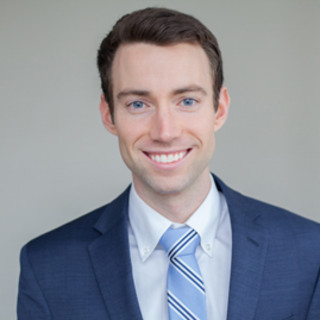
As a medical student, the 2019 Physician Compensation Report left me feeling optimistic for my future career. As graduation approaches, I viewed the report with my six-figure student loan debt in mind. Regardless of specialty, I feel confident that my classmates and I will be able to repay our student loan debts in a reasonable amount of time. As medical school tuition growth continues to outpace salary growth, the economics of medical school are becoming a larger concern, especially for students going into lower-paying specialties. The variability between cities and practice types will presumably remain by the time my class finishes training, and indicates that geographically-flexible graduates will have much better salary options.
The compensation rankings by metro area are largely unsurprising. It is well known that academic jobs pay less than private practice jobs, so areas with large academic institutions are expected to have lower average earning rates. The growth rate of wages in cities is largely irrelevant for medical students, as the numbers fluctuate year to year. Current seniors will not enter the workforce for a minimum of 3–5 years, by which point different cities will be experiencing different levels of growth.
Pay parity progress between men and women was another reason the report was optimistic for medical students. The pay gap between males and females is a complex issue and has lots of factors that influence it, but it is relatively agreed upon that factors like years of experience, practice setting, and hours worked do not completely account for the current gap. As more women graduate medical school and enter the workforce, I am hopeful that the gap will continue to narrow like it has in places like Birmingham, AL. The increasing trend of hospital employment should encourage decreases in the gap, as salaries are easier to standardize than the revenue generation models of most private practices. The fact that the gender pay gap narrowed in 64 percent of the surveyed metropolitan areas seems to support this. However, metro areas with large pay gaps saw an increase in the size of those gaps, indicating that wages between genders vary widely in different areas of the country. The cities with the largest increases and decreases in their gender wage gap are spread throughout the country. This indicates that the reasons behind the changes in gender pay gaps are city-specific, and not generalizable to certain regions of the country.
The salary breakdown among specialty is also unsurprising. The most competitive specialties to match into, like Dermatology and Orthopedic Surgery are the highest paying, and the least competitive specialties like Primary Care are the lowest paying. Income potential is clearly a motivator in specialty choice, more so now with the rise in student loan debt. As our country faces a significant Primary Care shortage, finding solutions to increase compensation or reduce the debt burden for Primary Care physicians should be part of the discussion to encourage more medical students to enter those fields.
The decrease in pay among employed physicians from 2017 to 2018 compared to the increase in pay for self-employed physicians is the most concerning aspect of the report for medical students. For the first time in decades, less than half of physicians own their own practice, and that number continues to decrease. As more mergers and acquisitions occur and fewer physicians opt for private practice, the opportunities for my generation of physicians to enter private practice after training will also diminish. Millennial physicians embracing employment is unsurprising given our desire for better lifestyles outside the hospital, but the associated decrease in compensation and the dwindling diversity in practice types are worrying.
Overall, the report leaves medical students with lots to look forward to. Physician compensation is still incredibly high, and regardless of specialty should be more than adequate to pay off our student loans. Most of the nation is moving towards gender pay parity, and I am optimistic that the trend will continue. Flattening wages and the diminishing number of private practices are concerning as medical school tuition continues and graduates lose flexibility in their practice type. The decrease in salary for employed physicians over the last year is concerning given the trend towards that practice model.
Cameron Todd is a fourth-year medical student at Tulane University School of Medicine. He will begin his Otolaryngology – Head and Neck Surgery Residency at Wake Forest Baptist Medical Center in July. When not in the hospital you can find him outside on his bicycle. He is a 2018–19 Doximity Author.






